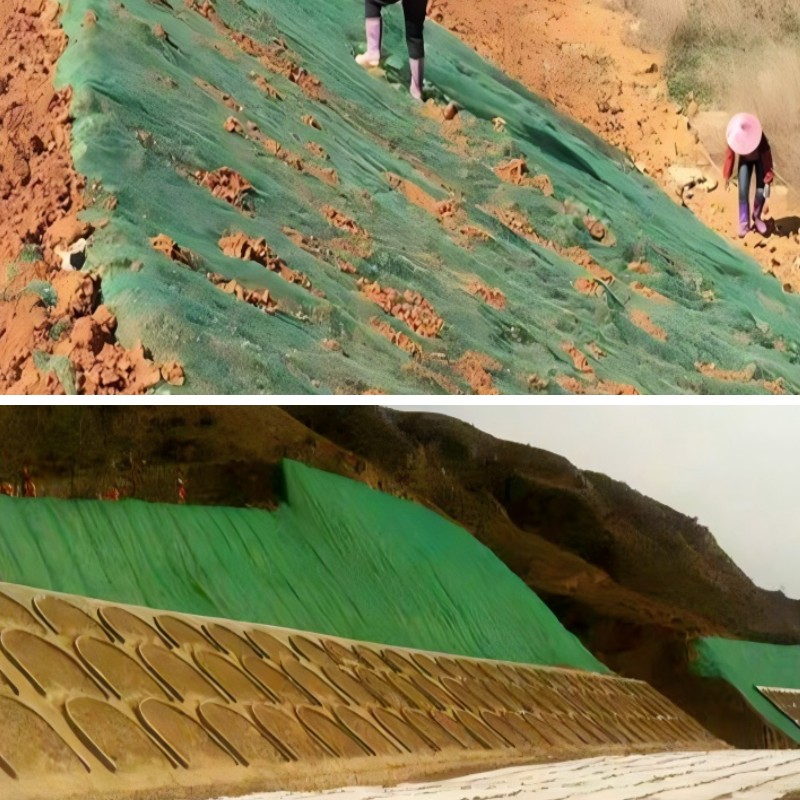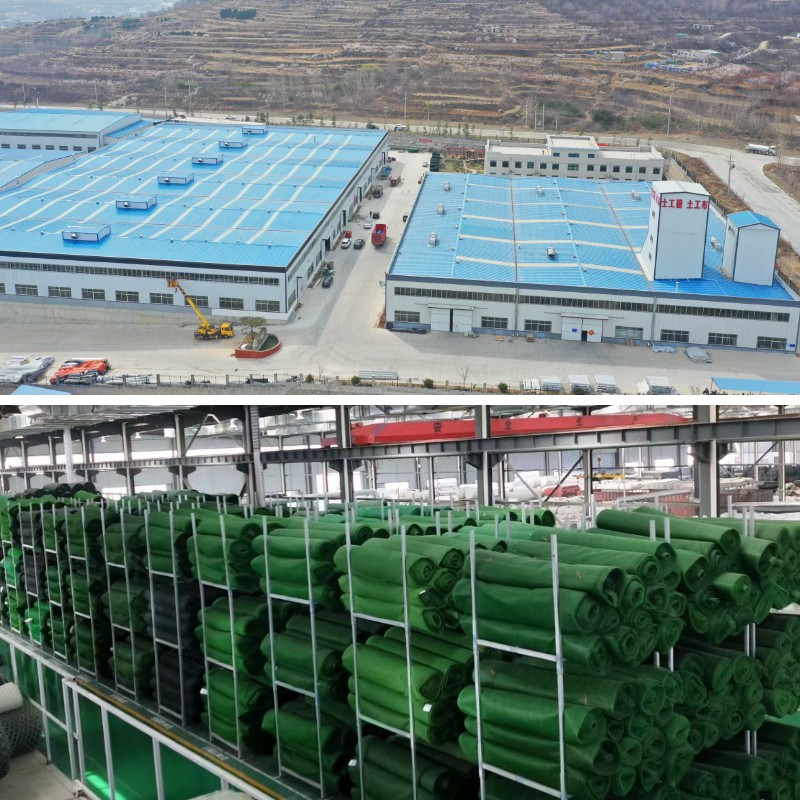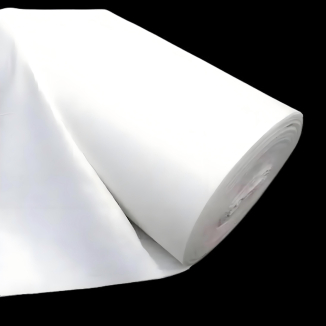Geomat for Slope Protection: The Ultimate Guide to Preventing Soil Erosion on Steep Slopes
Steep slopes—whether alongside highways, mining sites, or residential hillsides—are amongst the most prone to soil erosion. Heavy rainfall, wind, and human recreation can strip away topsoil in weeks, main to landslides, infrastructure damage, and misplaced vegetation. Traditional steep slope erosion manage methods, like concrete holding partitions or free stone revetments, are expensive, rigid, and regularly disrupt the herbal landscape. This is the place geomat steps in as a transformative solution. As a flexible, durable, and low cost tool, geomat erosion manipulate structures guard steep slopes whilst mixing with the environment. Below, we discover 4 key approaches geomat, paired with revetment mesh and different complementary technologies, safeguards steep slopes and prevents erosion.
1. How Geomat Works for Steep Slope Erosion Control: The Science of Stability
At its core, geomat is a three-dimensional, porous geosynthetic fabric (typically made from high-strength polyethylene or polypropylene) designed to lock soil in vicinity and dissipate the pressure of eroding agents. For steep slopes—where gravity amplifies erosion risk—geomat erosion manage depends on two essential mechanisms that set it aside from usual methods:
First, soil anchoring. Geomat’s interconnected community of fibers or cells traps soil particles, stopping them from being washed away by using rain or blown by way of wind. On slopes with angles exceeding 30 levels (common in toll road cuts or mountainous areas), this anchoring impact is vital—without it, even mild rainfall can set off sheet erosion or rill formation. Unlike unfastened mulch that slides down steep slopes, geomat stays securely in place, developing a secure base for vegetation to grow.
Second, power dissipation. When rain hits a steep slope, it positive factors pace quickly, growing its potential to dislodge soil. Geomat breaks up the pressure of raindrops and slows floor runoff, decreasing the erosive energy of water by way of up to 60%, in accordance to research by means of the International Geosynthetics Society. This is where revetment mesh regularly enhances geomat: revetment mesh (a woven or non-woven geotextile) is every now and then layered under geomat to add greater tensile strength, mainly on slopes susceptible to landslides. Together, geomat and revetment mesh create a sturdy barrier that addresses each soil displacement and runoff velocity—two major drivers of steep slope erosion manipulate failure.
Crucially, geomat additionally promotes vegetation growth, which in addition stabilizes slopes. Its porous shape permits water, air, and vitamins to attain soil, assisting grass, shrubs, or native plants. As roots develop thru the geomat, they structure a herbal “root mat” that reinforces the soil—turning a brief erosion manipulate measure into a long-term, self-sustaining solution.
2. Key Applications: Where Geomat Shines in Steep Slope Protection
Geomat isn’t confined to one kind of steep slope—it adapts to various environments, from city building websites to far off mining areas. Below are three high-impact functions the place geomat erosion manipulate and revetment mesh supply extremely good results:
Highway and Railway Slopes
Highways and railways regularly cut via steep hillsides, developing man-made slopes that are incredibly susceptible to erosion. These slopes have to face up to heavy rainfall, temperature fluctuations, and even vibration from passing vehicles—making sturdiness a pinnacle priority. Geomat is best here: it’s resistant to UV rays, chemical degradation, and bodily wear, making sure long-term performance. For example, in the Rocky Mountains (U.S.), the Department of Transportation makes use of geomat paired with revetment mesh on toll road slopes with angles up to forty five degrees. The geomat traps soil, whilst revetment mesh prevents the geomat from stretching or tearing underneath stress. This mixture has decreased slope upkeep expenses by way of 35% and eliminated erosion-related road closures.
Mining and Quarry Slopes
Mining operations create steep, barren slopes that are extraordinarily susceptible to erosion—without protection, sediment can wash into nearby waterways, harming ecosystems. Geomat erosion manage addresses this by using stabilizing slopes quickly, even in harsh mining environments. In Australia’s coal mining regions, geomat is hooked up on post-mining slopes earlier than vegetation is planted. The geomat traps free mining waste (like coal dirt or gravel), whilst its porous plan lets rainwater infiltrate as an alternative than run off. Revetment mesh is frequently delivered to high-risk areas (e.g., slopes close to water bodies) to add more reinforcement. This strategy no longer solely meets environmental rules for steep slope erosion manipulate however additionally speeds up mine rehabilitation—turning barren slopes into vegetated areas in 12–18 months.
Residential and Hillside Developments
Homes constructed on steep hillsides face steady erosion risk, which can harm foundations, driveways, and landscaping. Traditional options like concrete partitions are highly-priced and unattractive, however geomat presents a greater natural alternative. In California (U.S.), the place wildfires regularly break vegetation and go away slopes bare, house owners use geomat to guard their properties. Geomat is laid over burned slopes, then seeded with native grasses or groundcover. Revetment mesh is occasionally used on steeper sections (over 35 degrees) to forestall the geomat from moving at some point of heavy rains. This approach no longer solely stops erosion however additionally restores the landscape—improving property values and decreasing wildfire danger by using reintroducing vegetation.
3. Choosing and Installing Geomat: Best Practices for Steep Slopes
Not all geomat is created equal—selecting the proper product and putting in it effectively are crucial for steep slope erosion manipulate success. Below are key steps to make sure your geomat device performs properly long-term:
Step 1: Select the Right Geomat Type
Geomat comes in three most important types: non-woven, woven, and 3D geonet. For steep slopes, 3D geonet (a rigid, 3-dimensional structure) is regularly preferred—it has large cells that lure greater soil and dissipate runoff higher than flat geomat. However, the preference relies upon on slope attitude and soil type:
For slopes 30–40 tiers with loamy soil: Use non-woven geomat (flexible, right for vegetation growth) paired with revetment mesh for greater strength.
For slopes over forty tiers with sandy or gravelly soil: Use 3D geonet (rigid, prevents soil shifting) with a heavy-duty revetment mesh to withstand tearing.
Always test for geomat certifications (e.g., ASTM D5321 for geosynthetic erosion control) to make certain it meets enterprise requirements for steep slope erosion control.
Step 2: Prepare the Slope
Proper website online practise is non-negotiable. Before putting in geomat:
Remove particles (rocks, roots, stumps) that may want to puncture the geomat.
Smooth uneven areas—bulges or depressions can create stress factors that lead to geomat failure.
Grade the slope to make sure regular attitude (avoid surprising adjustments in steepness, which amplify erosion risk).
For slopes with present erosion (e.g., rills or small gullies), fill these areas with topsoil earlier than laying geomat—this creates a uniform floor for the geomat to adhere to.
Step 3: Install Geomat and Revetment Mesh
Installation order matters: if the use of revetment mesh, lay it first (directly on the slope) to create a base layer. Secure the mesh with stakes (6–8 inches long, made from galvanized metal to withstand rust) spaced 3–4 toes apart. Then, lay the geomat over the mesh, making sure overlapping edges (6–12 inches) to stop gaps. Secure the geomat with extra stakes, focusing on the pinnacle and backside of the slope—these areas ride the most stress from runoff and gravity.
For extraordinarily steep slopes (over 50 degrees), use anchor pins (longer than 12 inches) to invulnerable the geomat to the slope’s base. This prevents the geomat from sliding down the slope all through heavy rains. After installation, seed the geomat with vegetation suitable to the neighborhood climate—this in addition reinforces the slope and enhances the geomat’s erosion manage effect.
4. Eco-Friendly and Cost-Effective: Why Geomat Beats Traditional Methods
Geomat erosion manage isn’t simply effective—it’s additionally extra sustainable and low priced than common steep slope safety solutions. Here’s how it compares:
Eco-Friendly Advantages
Traditional techniques like concrete partitions or rock revetments disrupt ecosystems with the aid of blocking off water flow, killing native vegetation, and altering habitat. Geomat, via contrast, works with nature:
Its porous layout lets water infiltrate the soil, recharging groundwater and helping plant growth.
It avoids the want for heavy equipment (used to transport rocks or concrete), lowering carbon emissions through up to 40% per project.
When paired with native vegetation, geomat restores biodiversity—providing habitat for insects, birds, and small mammals.
Revetment mesh similarly enhances sustainability: most mesh is made from recycled substances (e.g., recycled polyester) and is thoroughly recyclable at the cease of its lifespan. This aligns with world desires for sustainable development and reduces the environmental affect of steep slope erosion control.
Cost Savings
While geomat has a greater upfront price than mulch or straw, it saves cash in the lengthy run:
Lower maintenance: Geomat lasts 15–20 years (vs. 2–3 years for mulch), lowering the want for regular replacements. For toll road slopes, this interprets to
10,000–15,000 in annual preservation financial savings per mile.
Faster installation: Geomat can be hooked up 2–3 instances quicker than concrete walls, decreasing labor charges through 25–30%.
Reduced restore costs: Geomat prevents erosion-related harm to infrastructure (e.g., roadways, homes), fending off luxurious repairs. For example, a residential hillside blanketed by using geomat is 80% much less probably to require basis repairs due to erosion.
Conclusion: Invest in Geomat for Resilient Steep Slope Protection
Steep slope erosion manage doesn’t have to be pricey or dangerous to the environment. Geomat, paired with revetment mesh, presents a flexible, durable, and sustainable answer that protects slopes, helps vegetation, and saves money. Whether you’re retaining a dual carriageway slope, rehabilitating a mine site, or defending a residential hillside, geomat adapts to your wants and offers long-term results.
By deciding on geomat erosion control, you’re no longer simply stopping erosion—you’re investing in a healthier, extra resilient landscape. It’s a validated answer that’s already defending steep slopes worldwide, and its recognition is developing as extra engineers, contractors, and house owners apprehend its benefits. Make the swap to geomat today, and make sure your steep slopes remain secure for many years to come.
Contact Us
Company Name: Shandong Chuangwei New Materials Co., LTD
Contact Person :Jaden Sylvan
Contact Number :+86 19305485668
WhatsApp:+86 19305485668
Enterprise Email: cggeosynthetics@gmail.com
Enterprise Address: Entrepreneurship Park, Dayue District, Tai 'an City,
Shandong Province









